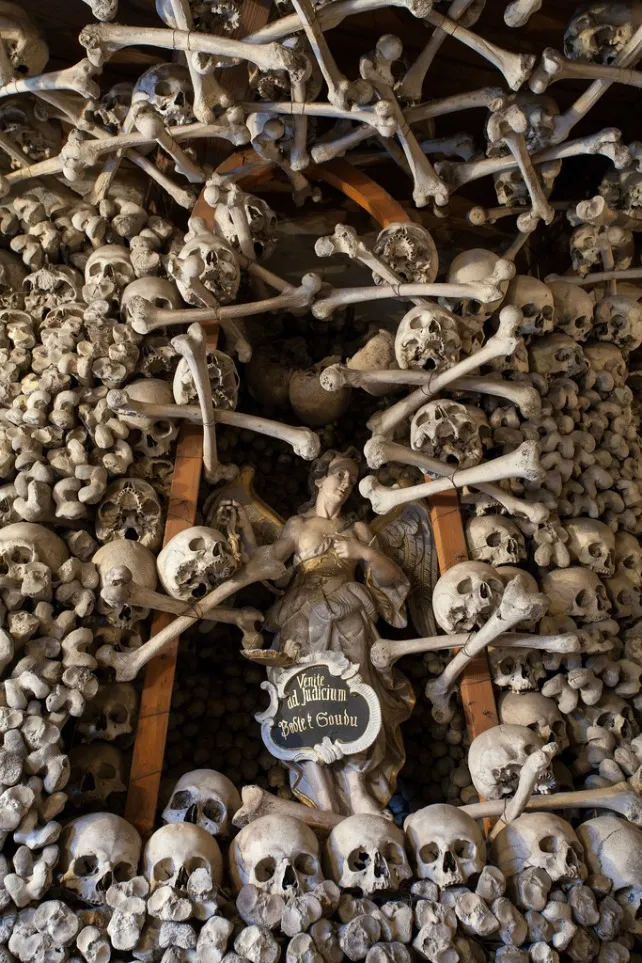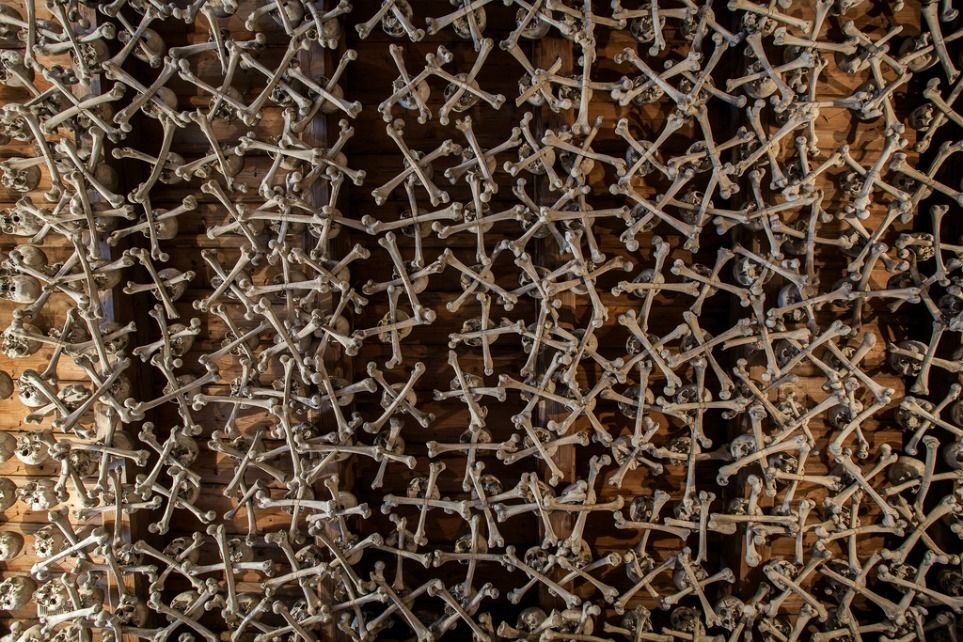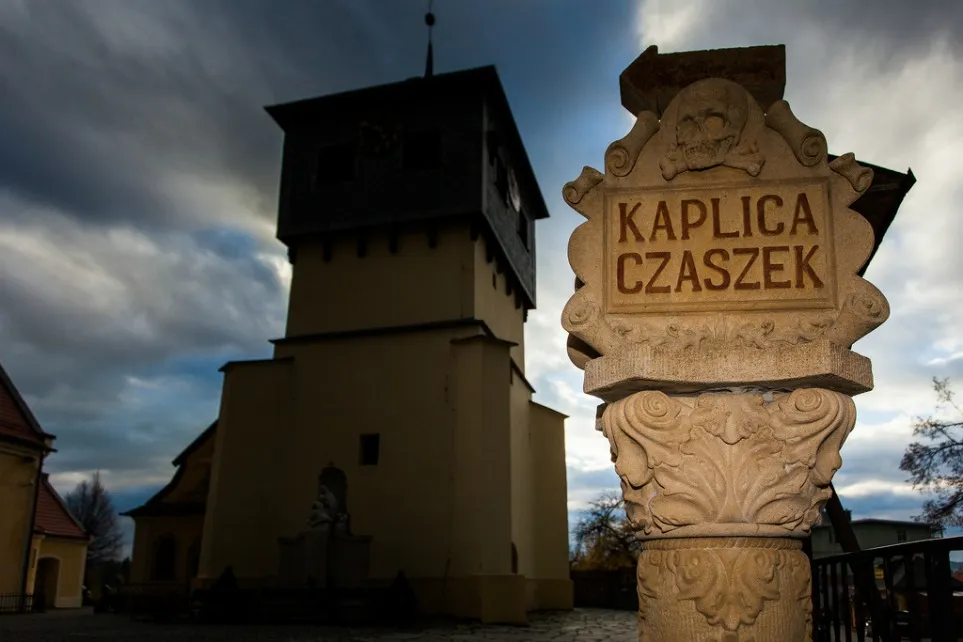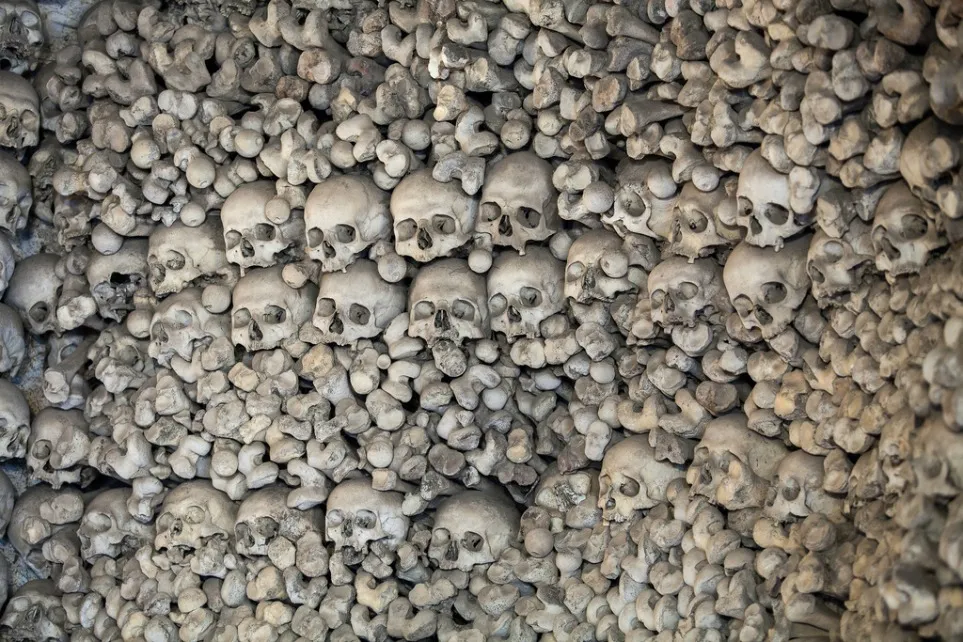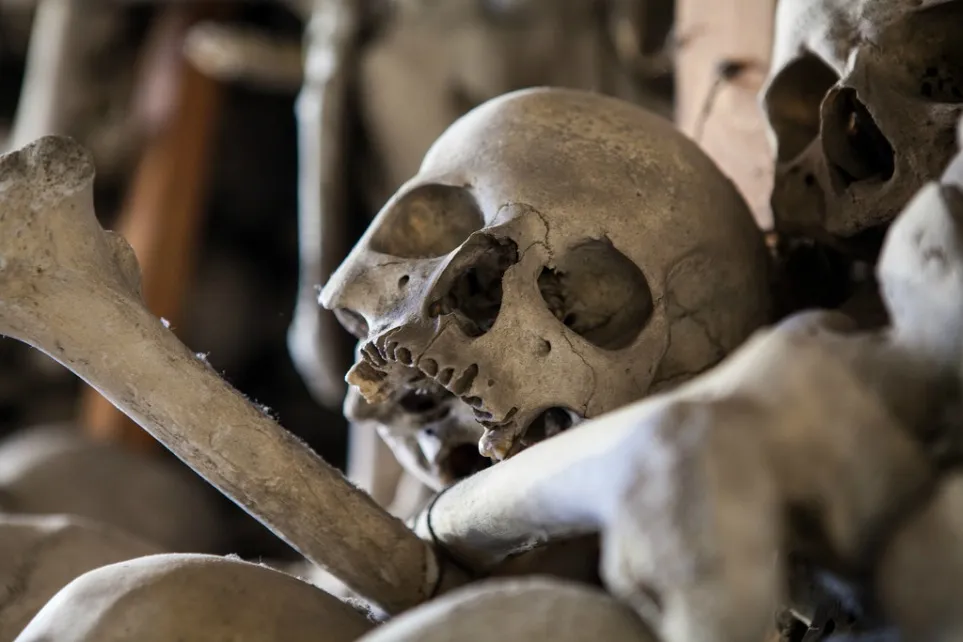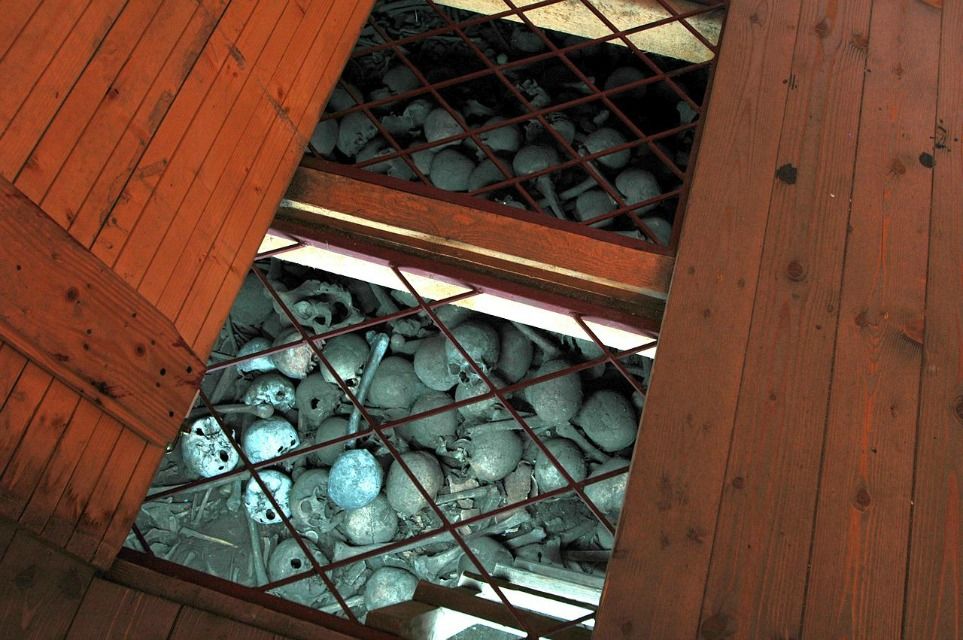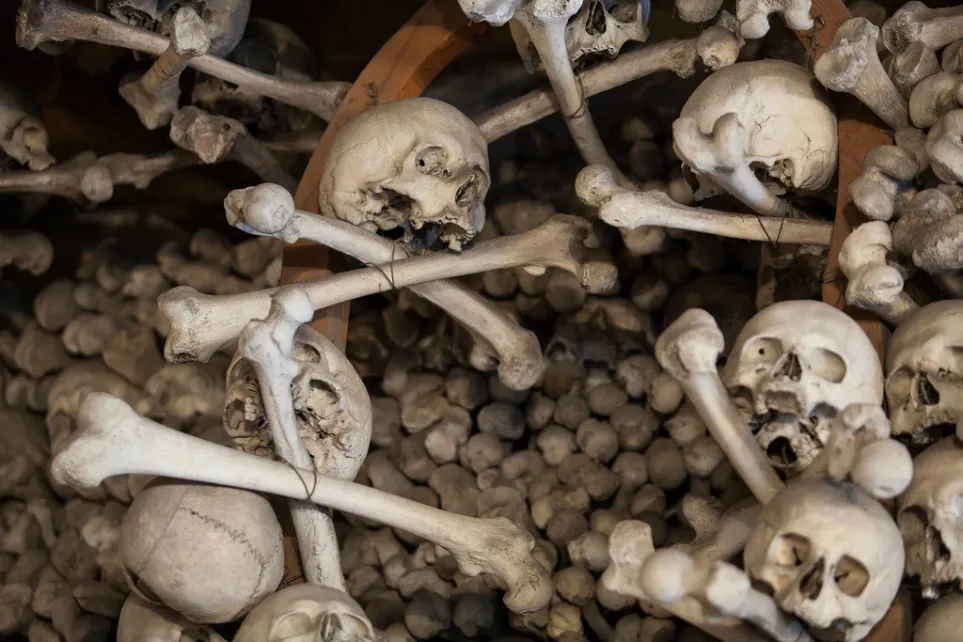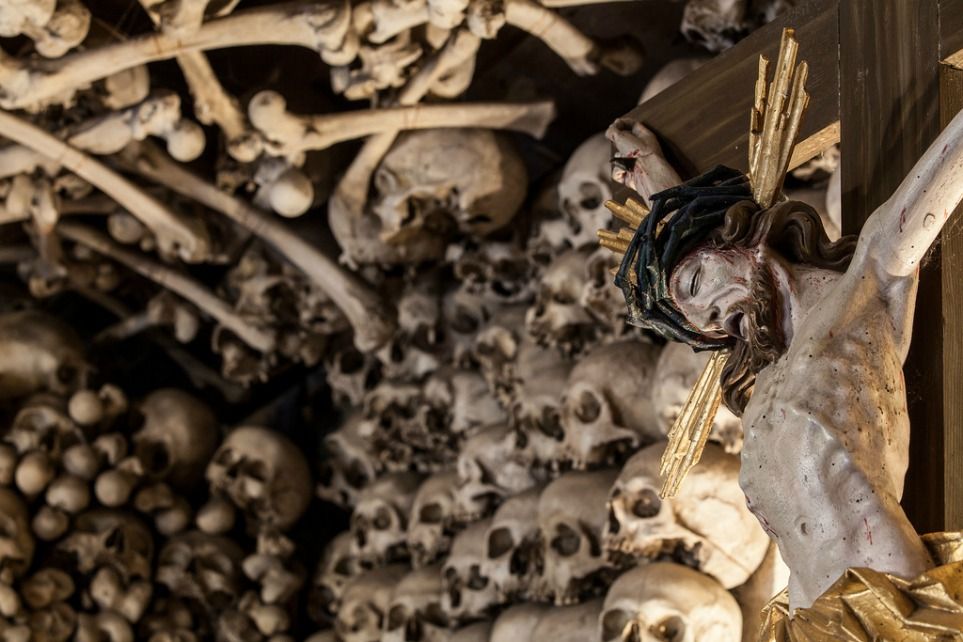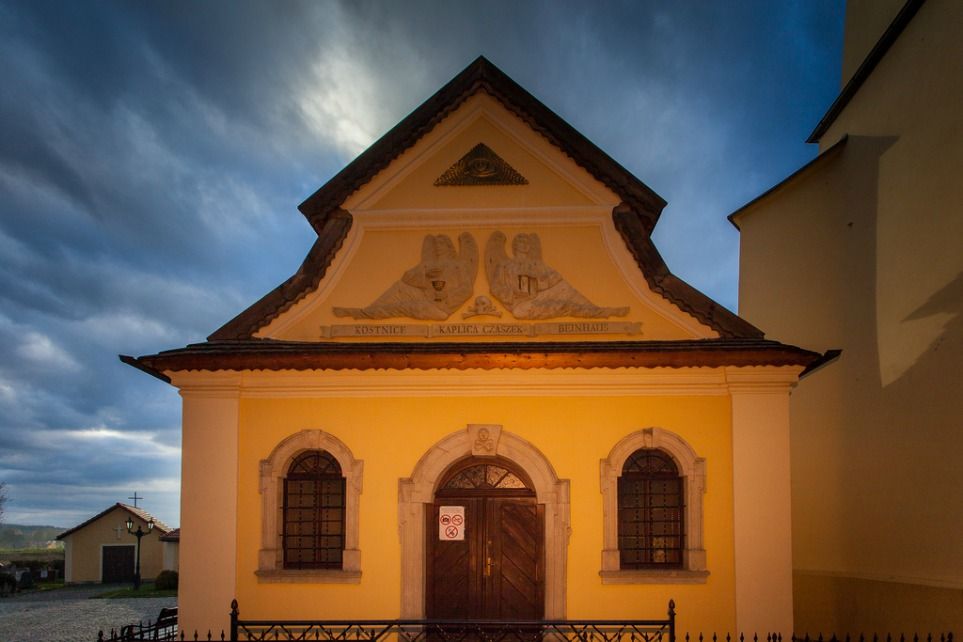This Beautiful Chapel in Czermna, Poland, Is Constructed Out of Thousands of Human Bones
Shin bones decorate the ceiling, skulls line the walls and over 21,000 bodies are buried in the basement
From the road, it would be easy to overlook this small, unassuming chapel located in one of the oldest towns in southwestern Poland. But the wooden doors hide a spectacular, macabre interior. The skulls and leg bones of over 3,000 victims of wars and plagues cover the walls and ceiling, and a crypt below, accessible through a trapdoor, houses over 21,000 additional remains. Between 1776 and 1804, the local priest, Vaclav Tomasek, painstakingly gathered, cleaned and carefully arranged skeletons recovered from numerous, shallow mass graves left by the Thirty Years’ War, Silesian Wars and cholera outbreaks. Modeled off of similar ossuaries and catacombs in Rome, the chapel was intended as a shrine for the dead, as well as a “memento mori” for the living.
On the church’s altar, Tomasek placed the bones of important figures and curiosities, including the skull of the local mayor, skulls with bullet holes, a skull deformed by syphilis and the bones of a supposed giant. When the chapel's creator passed away in 1804, his skull was placed on the altar as well.
View the photos above or explore the 360° interactive panorama on Kaplica Czaszek’s official site (in Polish).
Planning Your Next Trip?
Explore great travel deals
Smithsonian magazine participates in affiliate link advertising programs. If you purchase an item through these links, we receive a commission.

